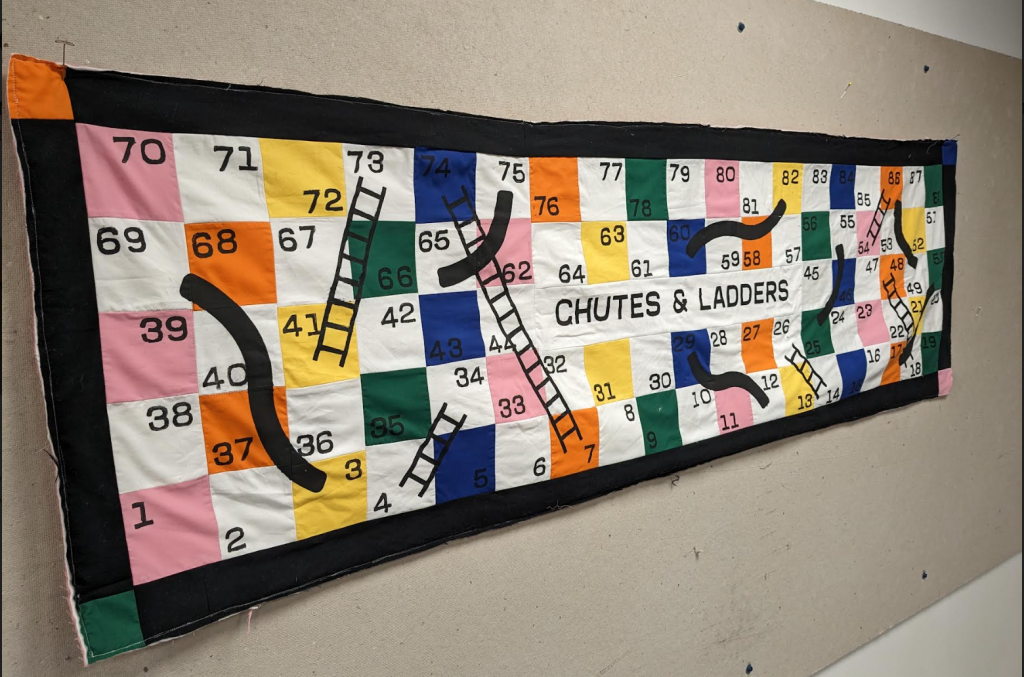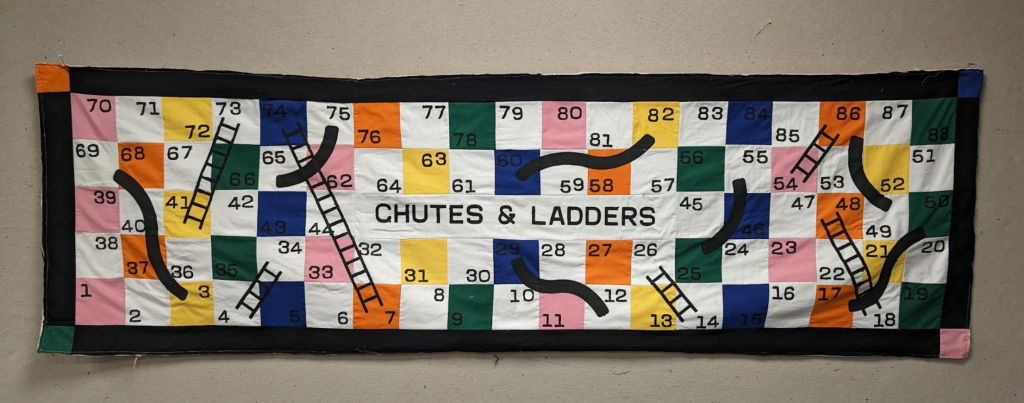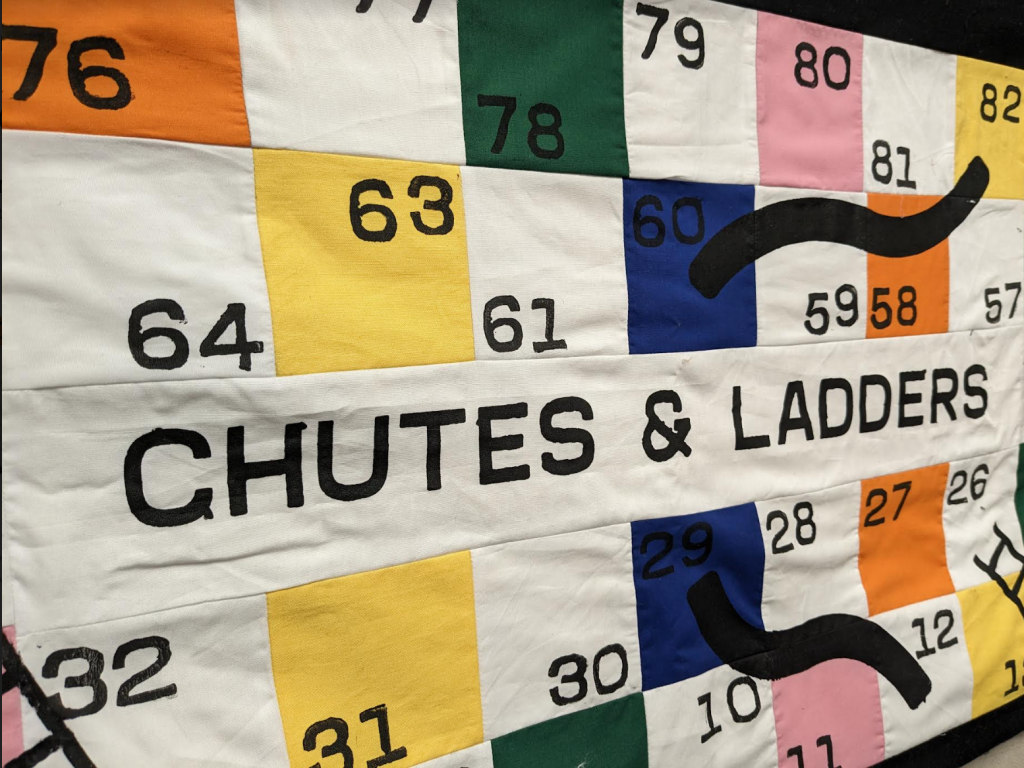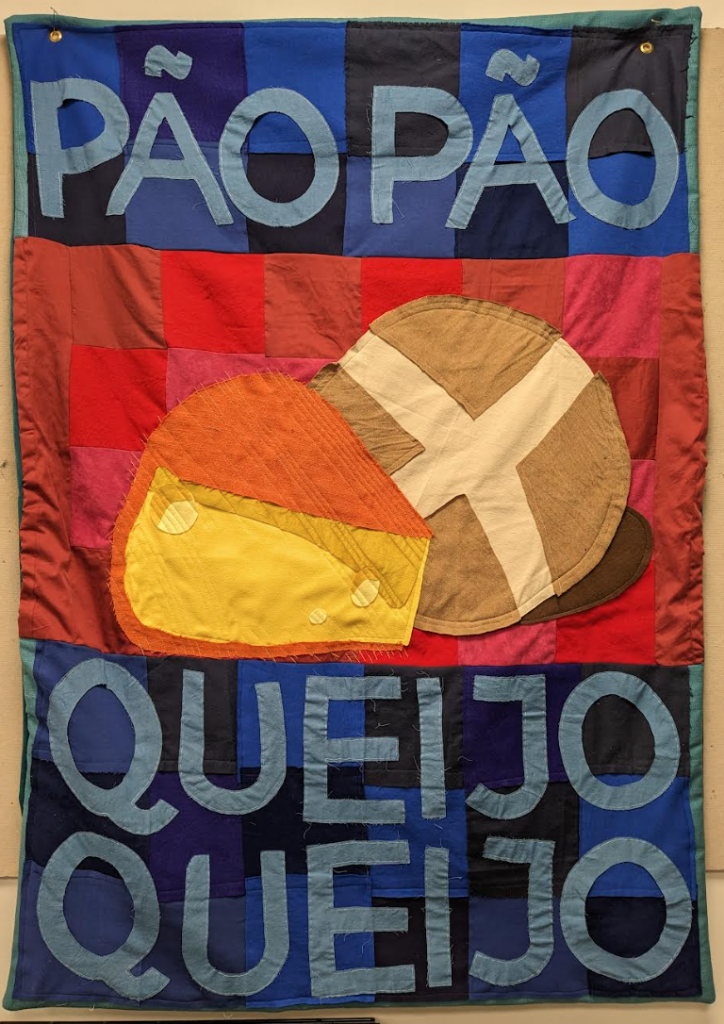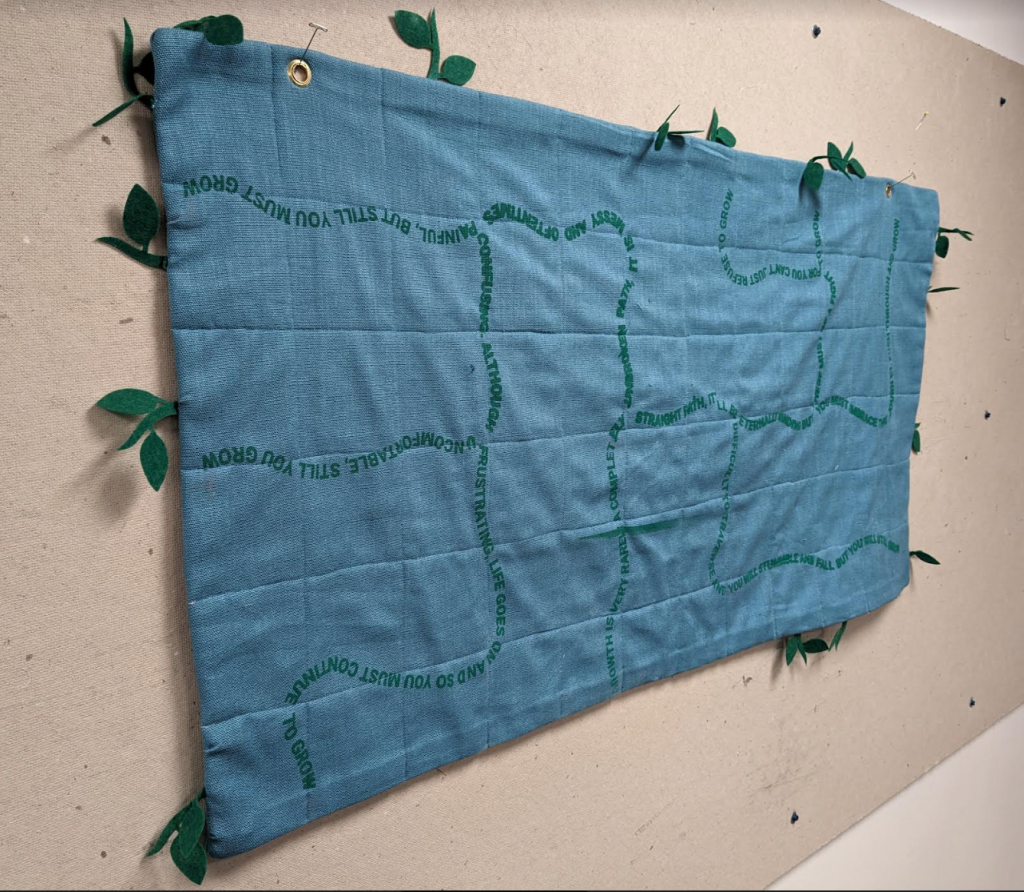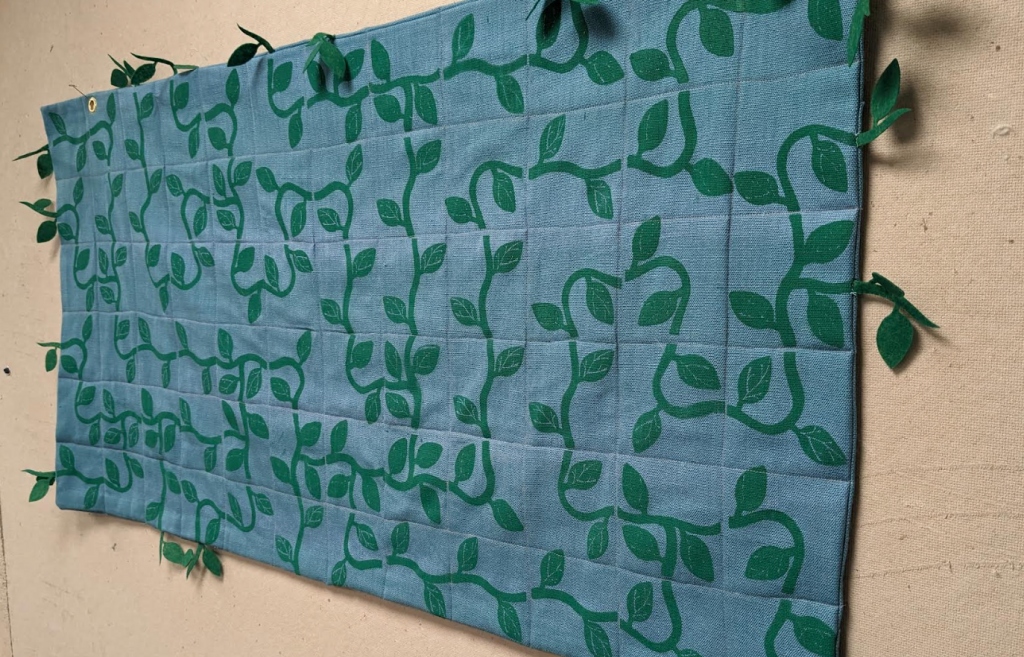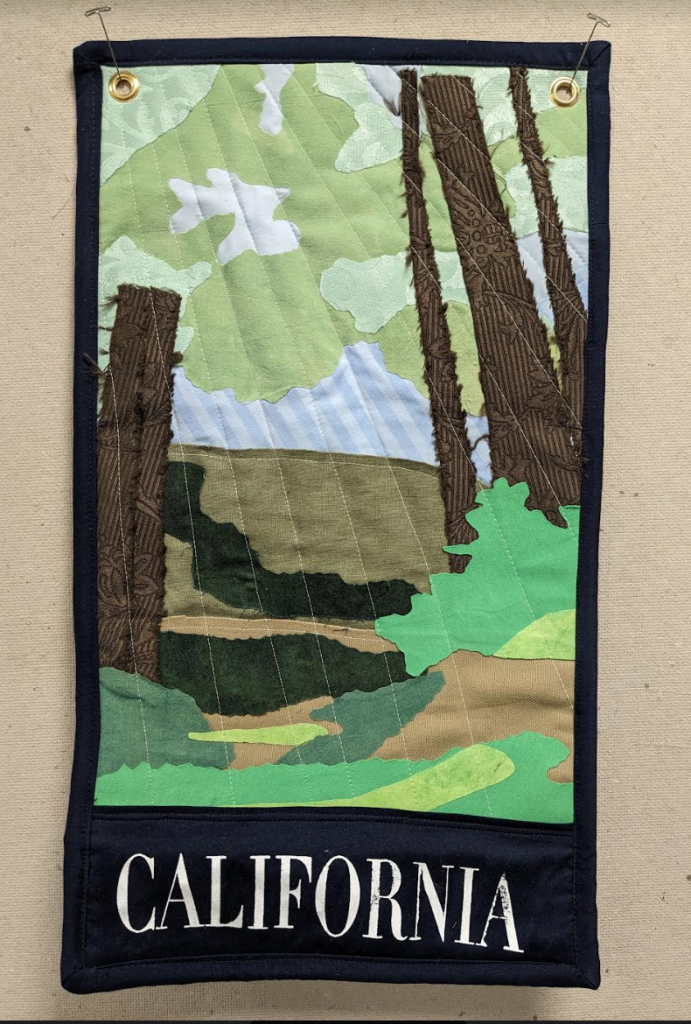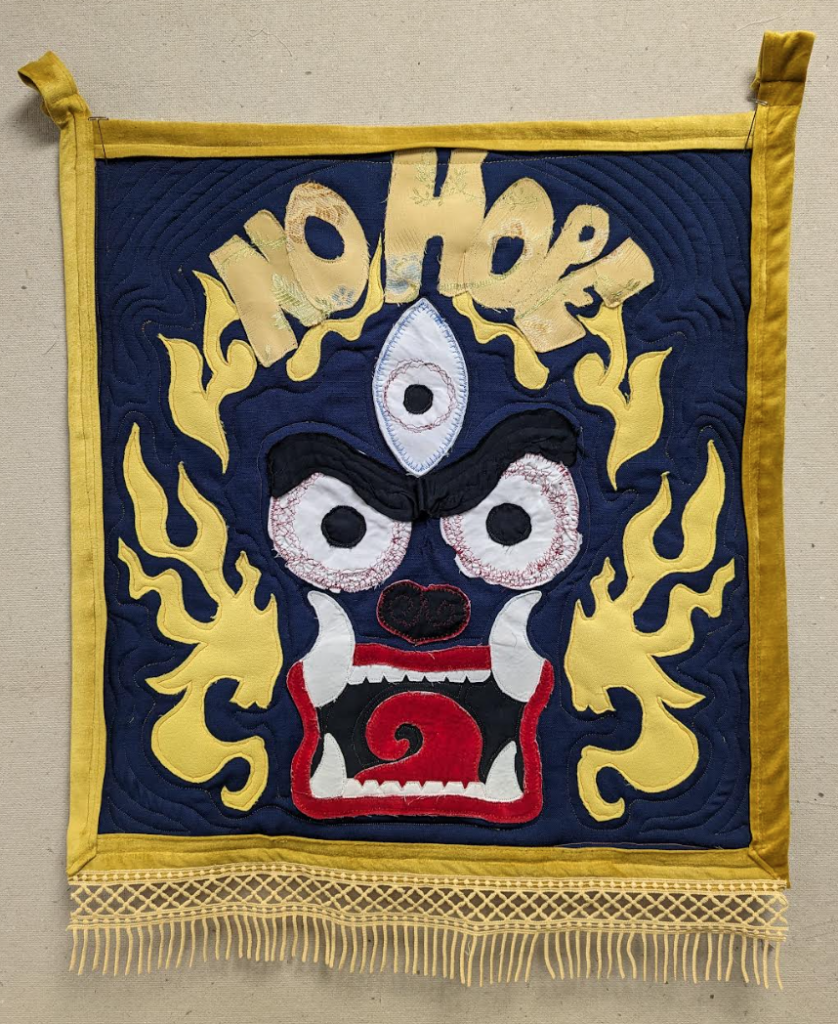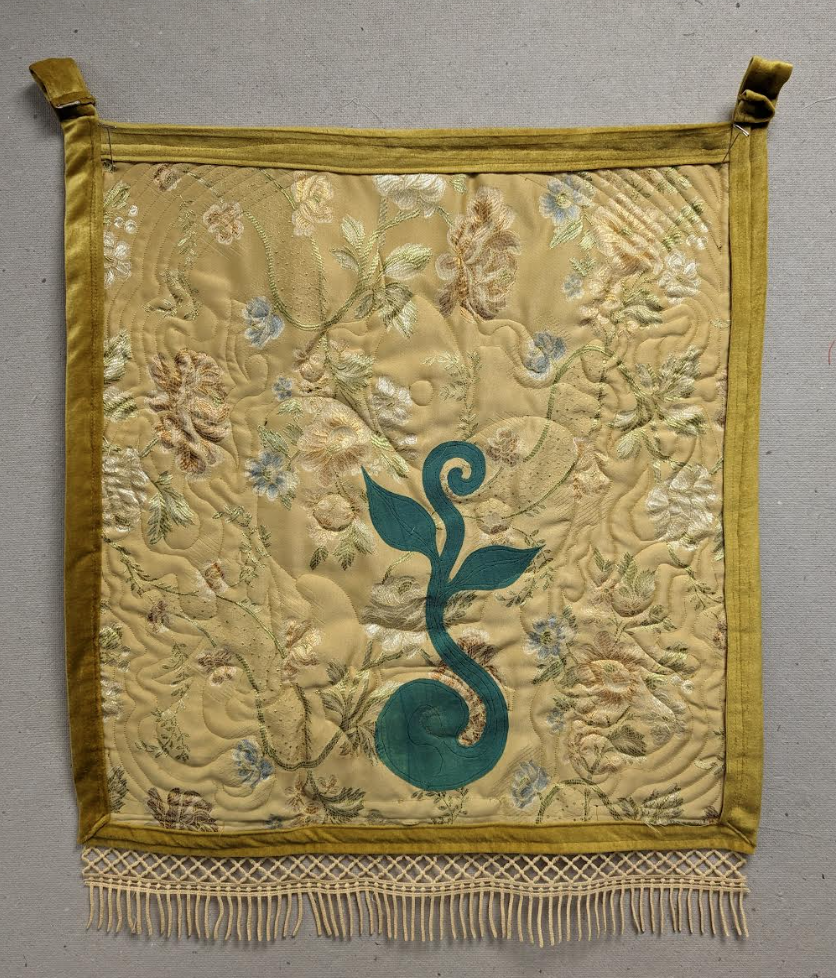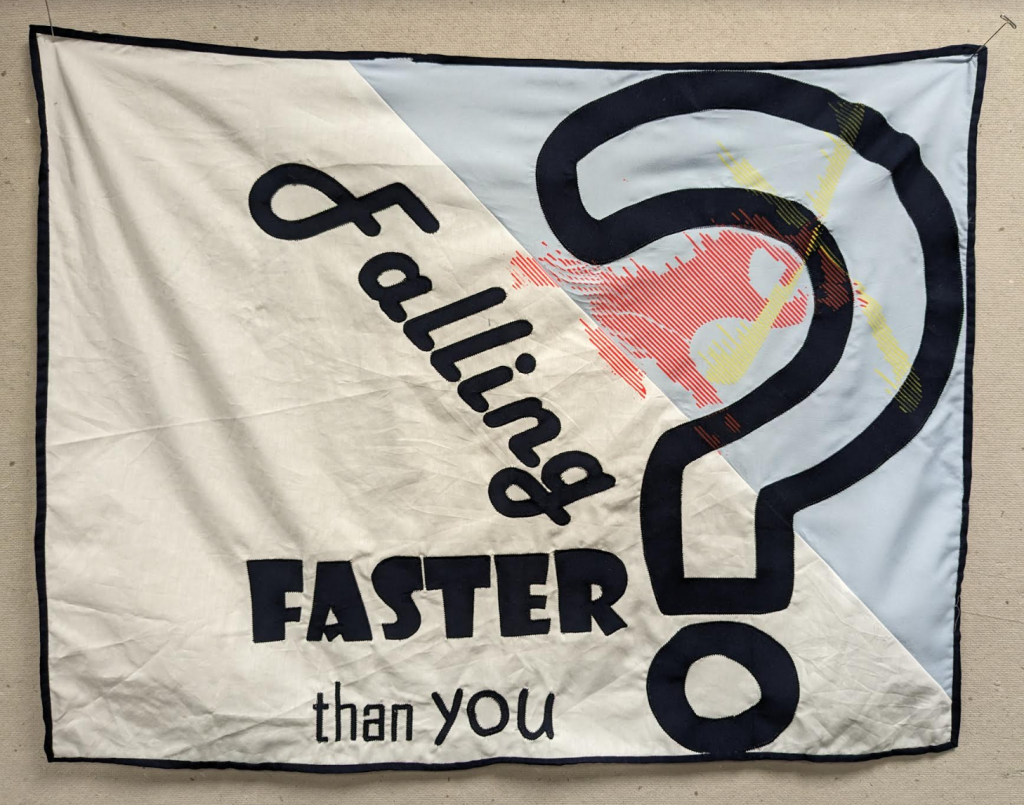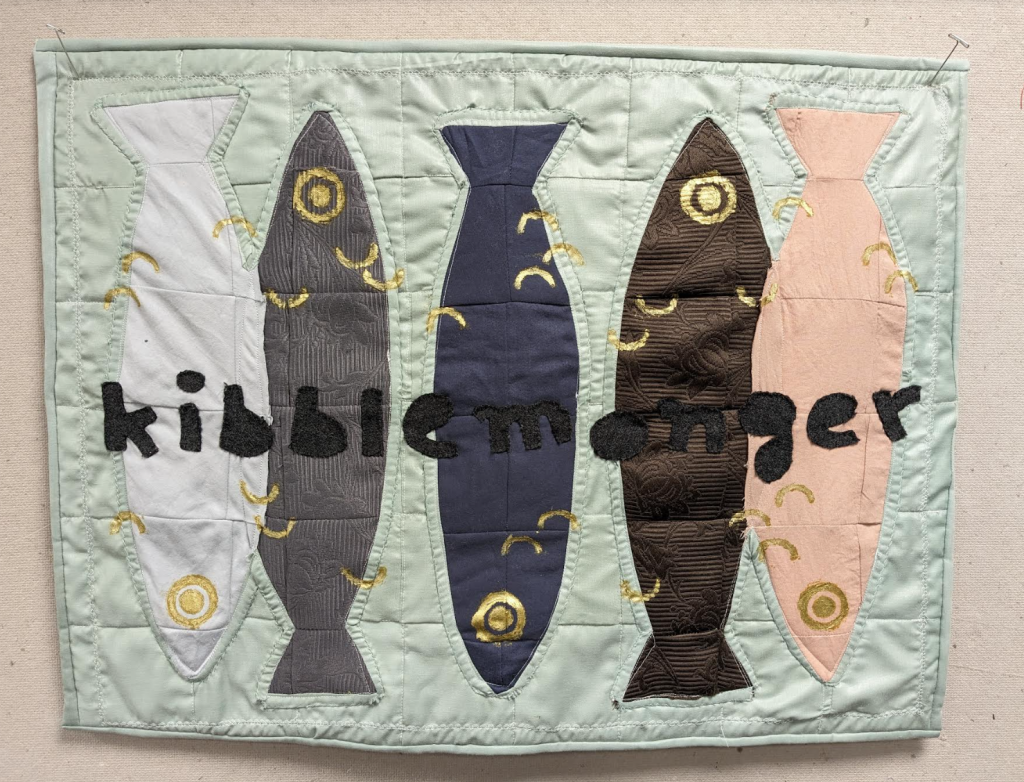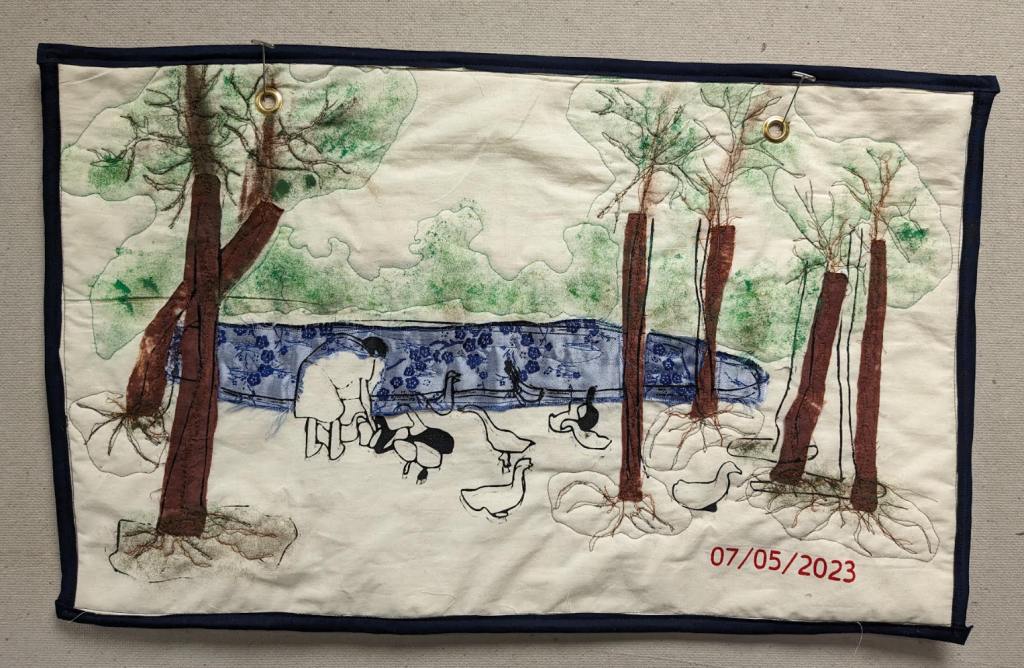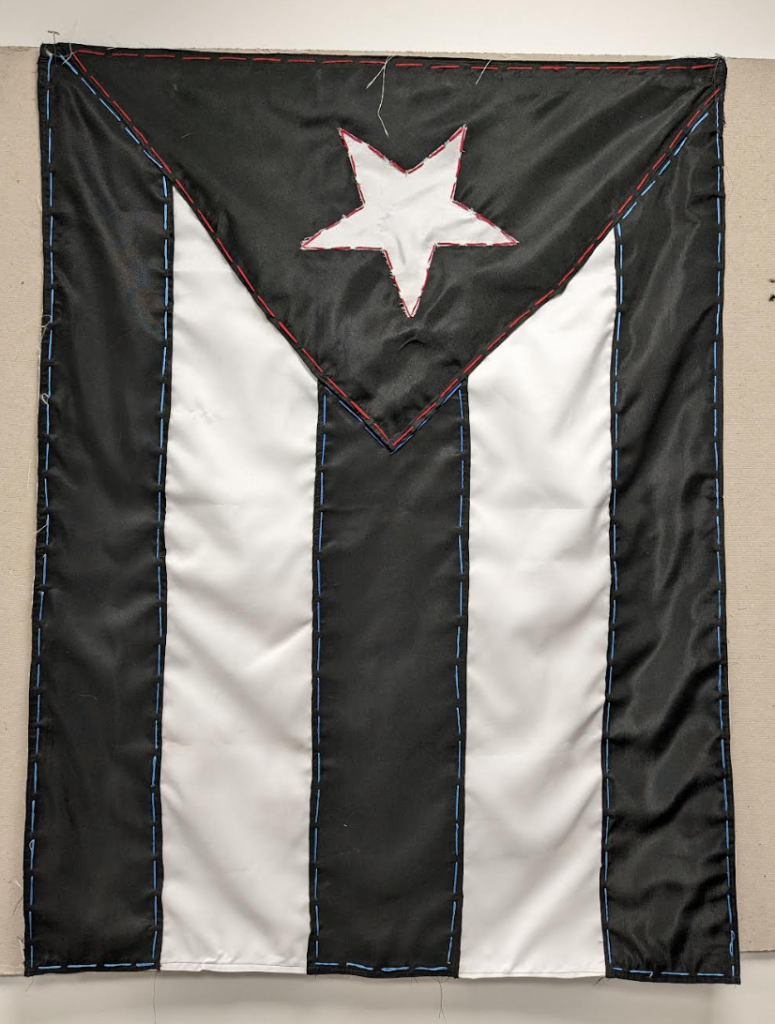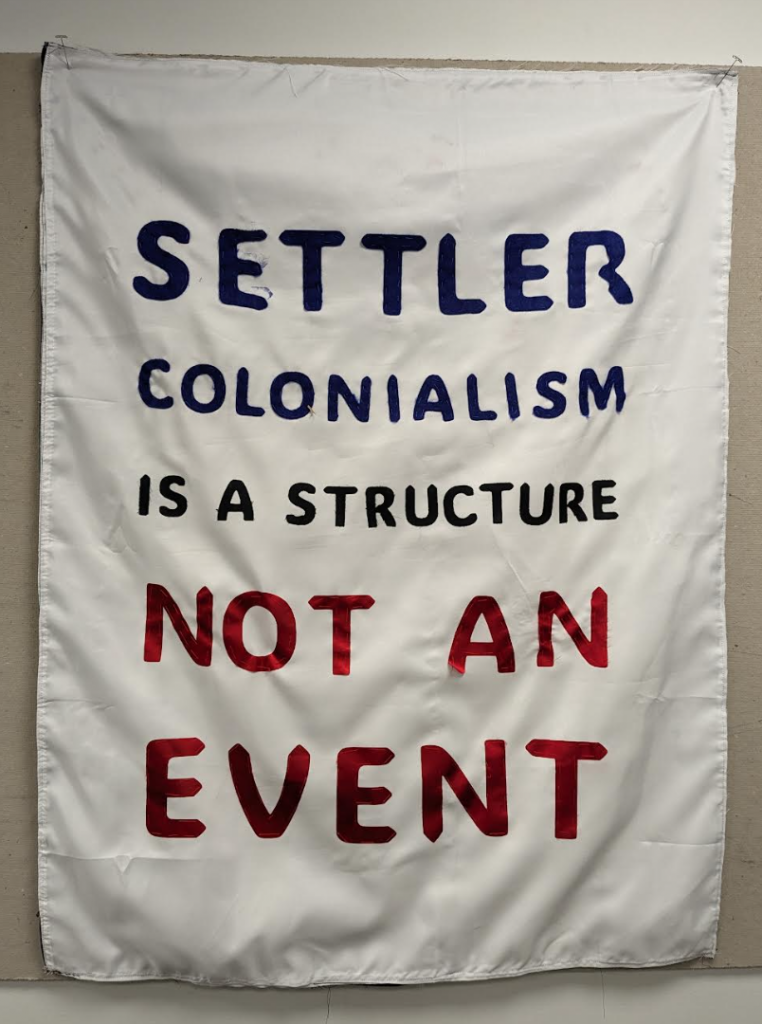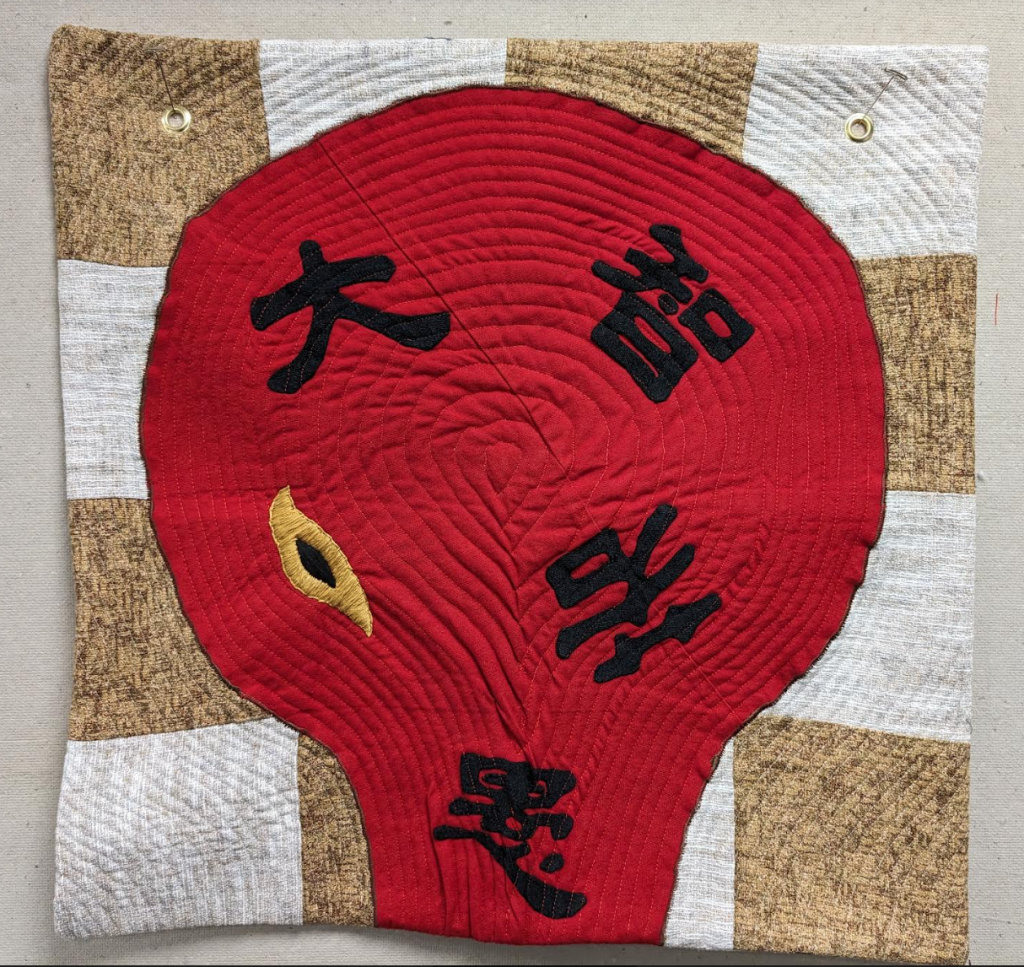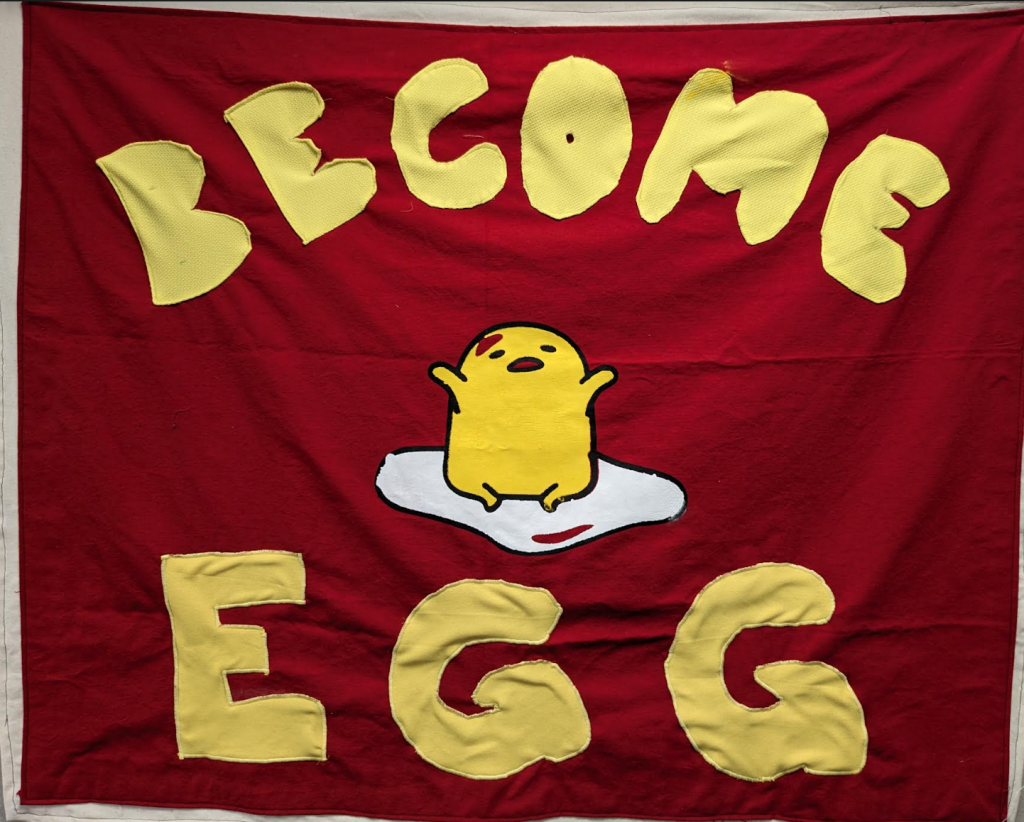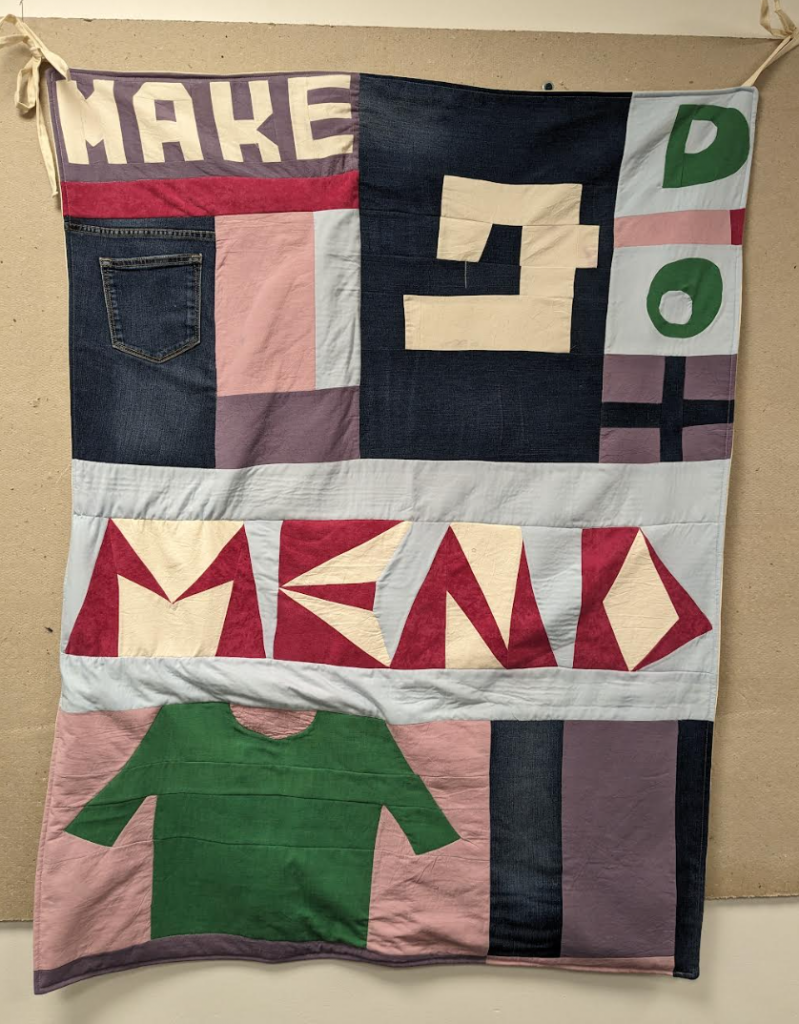February 28, week 7
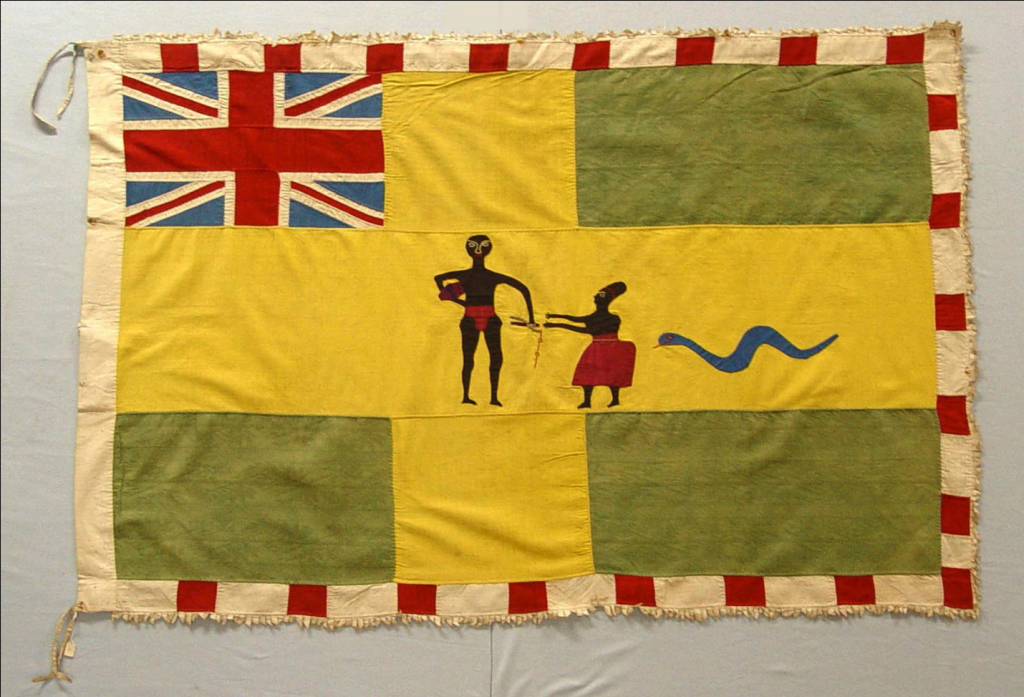
- Introduction to Banners and Quilts: Who Am I? What Matters?
A Walk Round Banner Culture - Siena Italy, The Palio, 10:47
- Asofo Flags: Stitched Through Time, Gus Casely-Hayford, 6:58
- Gus Casely-Hayford on Fante Asofo Flags, Artist and Empire, 3:55
- Unity Through Design: The Power of Flags, Michael Green, 15:27
- Shoton Festival, 1:42
- Silk, Satin and Suffrage, 10:18
Banners and Quilts: Who Am I? What Matters?
The task at hand is to create a soft banner or quilt with the purpose of expressing your identity and the things that hold significance in your life. The central focus of this assignment is to visually encapsulate who you are, convey your values and beliefs, or bring attention to a specific problem that requires a spotlight. No issue is too small, too mundane, too frivolous or too big and complex for this assignment. Abstract and decorative elements should complement and support your intended message.
Assignment considerations and requirements:
- Consider the space and context in which your banner or quilt is meant to exist in. Is it a wall in your home? Is it a window? Is it your couch? Is it meant to be carried during a rally?
- Both front, edges, and back of the banner must be considered and completed.
- The hanging mechanism, if any, must be appropriate for the chosen context.
- Shape and size of the banner must complement the chosen design and concept, with a minimum of 4 square feet required.
- You must incorporate text, in any language, even if it is just a name or date.
- You can use quilting techniques such as patchwork and applique, silk screening with cut vinyl, block printing, resist dyeing, painting on fabric, and embroidery to create your soft banner or quilt. Technical demos for basic quilting, silk screening, block printing, and the dyeing of cellulose fabrics will be introduced.
- The piece you make must have presence. Your work should command attention; it is not intended to be an intimate object. Whether displayed on the street, in a window, on a wall, or on a bed, your work should stand out.
Design Process
No creative process is the same and everyone approaches the creative process differently. The design process that I outline below is only one way of approaching a challenge. Having said that, there are features that most creative processes share and those are: multiple cycles of ITERATION and EVALUATION.
ITERATION is the act of expanding possibilities for an idea, whether visual or conceptual; it is taking an idea and finding variety of ways to achieve its expression. EVALUATION is the act of identifying which iteration is most successful. Repeating this process of iteration and evaluation is referred to by many names such as the design process, artistic practice, brainstorming etc.
But how does one identify what is SUCCESSFUL to you and to others? Such judgments always require criteria of what is being valued and sought after etc. What is valued and sought after can be driven by internal and private values (your personality, your heritage, your social, political, spiritual beliefs, your trauma, even your goals in life) and/or by the audience (the market, the teacher, the parents, the art world, the grant from the museum, the one special person you want to impress etc). This encompasses formal and conceptual choices. In the case of this class, the teacher sets some parameters for what should be sought after and you can use these to judge if your ideas are answering the call of the assignment. Yet, this assignment also leaves a lot of freedom to you, the maker, to set further criteria against which you will judge the outcome of your own endeavors. You are responsible to identify what private and internal goals and values are important for you to achieve.
Design Steps
- Identify 1-3 issues/topics you may want to visually express in response to “What Matters?”
- Iteration. Begin by generating 5-10 ways each idea can be expressed visually. Work fast
without judgment. Embrace the imperfect sketch. - Answer the questions below to identify what internal goals you may have guiding you through this assignment.
*How do you want your grandmother to respond when she sees your creation? How do you want the person you wish to impress to respond when they see your creation?
*What aesthetic style are you attracted to and why? If you have difficulty answering this question, get on Pinterest, search for quilts, artistic banners, paintings, graphic imagery. Notice how your respond seeing these works. Make notes regarding what grabs your attention and try to identify why.
*Some ideas are best expressed with a specific visual style. Are you comfortable to play with a different aesthetic language than what you are comfortable with? Are you comfortable stepping out of your comfort zone to best communicate your ideas?
*Do you have strong opinions that you wish to express? Will your expression be abrasive and loud or polite? Or do you wish to be subtle and puzzle like in your communication? What makes for an interesting subtle visual experience that still delivers a message?
- Find examples of textile works that express ideas very loudly. Find examples of textile works that express ideas softly and with subtleness. Pin these examples.
- Evaluation: use the criteria you have set out for yourself to identify successful iterations.
- Iteration: expand on the designs that are hitting the mark, making life size mock ups in paper and fabric, using pins, tape, thread when you feel ready. Take pictures with your phone to document various possibilities. Make samples if necessary to see if it is possible to achieve something physically.
- Repeat Iteration and Evaluation until you exhaust yourself creatively and select one final design to work with.
- Finalize your to scale design, identify techniques and color palette that you will be using. Begin assembling your tools and fabrics. Make a plan of action for all the steps with a schedule. Balance time, your technical limitations and the limitations of techniques you will be using to create imagery.
Videos to Watch (quiz March 13):
Cloth and Culture: Quilted Objects from Around the World (beginning – 35 mins)
Craft in America: QUILTS episode
Gee’s Bend, Quilting Over Generation
How a Group of Women in This Small Alabama Town Perfected the Art of Quilting
Bisa Butler: Portraits
Videos to Watch (quiz March 20):
Natural Resist Dye in China (7 minutes)
Tie Dyeing with Bai People (4 minutes)
Japanese Tie Dyeing in Arimatsu (4 minutes)
The Art of Japanese Shibori (9 minutes)
Step-by-Step Process for Making Batik (2 minutes)
Batik Block Printed Process Malaysia (1 minute)
West African Textiles (an overview of textile traditions throughout Africa with examples of resist dyeing fabrics) (30 minute)
Making Adire Cloth (2 minutes)
How to make West African mudcloth (Bogolan) (3 minutes)
Making Batik Fabric in Ghana (13 minutes)
African Wax Print (6 minutes)
Resist Block Printing and Indigo Dyeing in Europe (10 minutes)
How Ikat is Made-Uzbekistan (4 minutes)
Deadlines Overview
March 11
demo: piecework letter sample with quilting interfacing, stabilizers and batting
due: Weavings and Weaving Samples
March 13
Weaving Critique
quiz: Quilting Videos
initial proposal for Banners and Quilts due via email at the beginning of class
pin inspirational images/visual research/drawings
March 18
Weaving Critique, continued
demo: block printing, silk screen on fabric using Cricut machine
March 20
quiz: Resist Dyeing Techniques
demo: applique techniques, curves in patchwork, free motion embroidery
March 25
final proposal for Banners and Quilts due via email at the beginning of class
pin inspirational images/visual research/drawings
demo: Dyeing Cellulose Fibers + Resist Dye Techniques
due: Shibori Sample
March 27
workday
April 1
workday
due: Independent Zipper Pouch
April 3
wet felting
quiz: Felting
April 8
demo: using the industrial sewing machine, dry felting
workday
April 10
workday
April 15
due: Banners and Quilts: Who Am I? What Matters?
Examples of Students Work, Fall 2023
